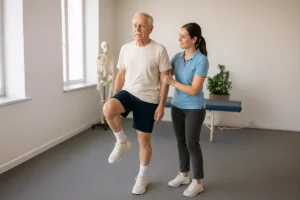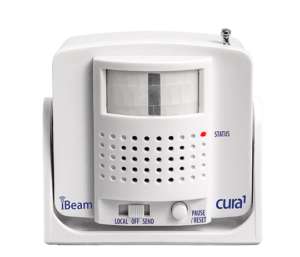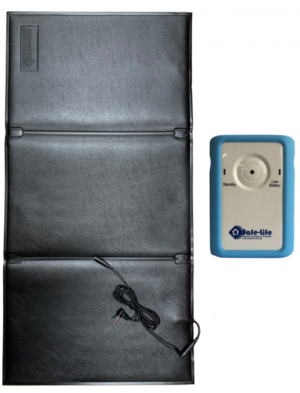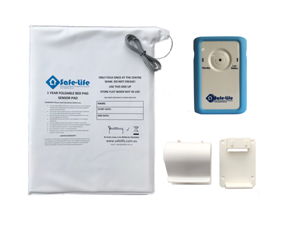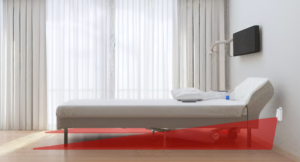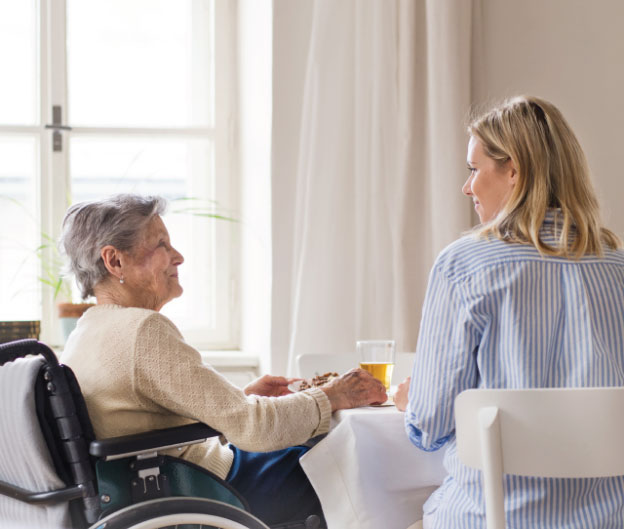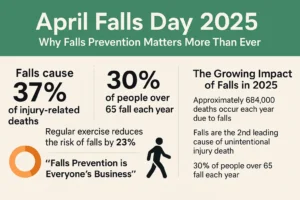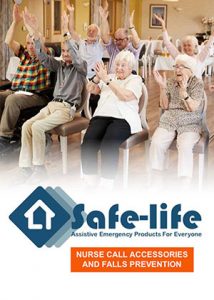Introduction to sleepwalking and its risks
Sleepwalking, also known as somnambulism, is a sleep disorder that causes individuals to walk or perform other complex behaviours while asleep. Although sleepwalking is generally harmless, it can lead to unsafe situations and potential harm for the sleepwalker or others nearby. This article will explore the risks associated with sleepwalking and provide guidance on
how to wake a sleepwalker safely.
The risks of sleepwalking vary depending on the individual and the specific behaviours they exhibit during episodes. In some cases, sleepwalkers may engage in relatively harmless actions such as talking or eating. However, in more severe cases, sleepwalkers may put themselves or others in danger by leaving their home, wandering into unsafe environments, or even attempting to drive. Additionally, sleepwalkers may experience injuries from falls or other accidents, as they are not fully conscious and aware of their surroundings.
Given these risks, it is essential to understand how to wake a sleepwalker without causing harm. This article aims to debunk common misconceptions about waking a sleepwalker, explain the sleep cycle and sleepwalking, and provide practical advice on how to handle sleepwalking incidents safely.
Common Misconceptions about Waking a Sleepwalker
There are several myths and misconceptions surrounding the topic of how to wake a sleepwalker. One common myth is that waking a sleepwalker can cause them to suffer a heart attack or stroke. While it is true that suddenly waking a sleepwalker can cause disorientation and distress, there is no evidence to support the idea that it directly leads to serious health complications.
Another misconception is that it is impossible to wake a sleepwalker. In reality, sleepwalkers can be awakened, although it may require a gentle and patient approach to avoid startling them. The key is to understand the sleep cycle, the nature of sleepwalking, and how to employ safety precautions before attempting to wake a sleepwalker.
Understanding the sleep cycle and sleepwalking
To better comprehend
how to wake a sleepwalker safely, it is important to understand the sleep cycle and the nature of sleepwalking. The sleep cycle consists of four stages: NREM (non-rapid eye movement) stages 1-3 and REM (rapid eye movement) sleep. Sleepwalking typically occurs during the deep NREM stage 3 sleep when the body is in a state of deep relaxation.
During this stage, the brain waves slow down, and the body undergoes restorative processes. Sleepwalking occurs when part of the brain remains in a deep sleep while another part is awake enough to control movement. As a result, sleepwalkers are not fully conscious and may exhibit unusual or potentially dangerous behaviours.
Essential safety precautions before attempting to wake a sleepwalker
Before attempting to wake a sleepwalker, it is crucial to take several safety precautions to minimize the risk of injury or distress. Some essential safety measures include:
- Stay calm and assess the situation: It is important to remain composed when encountering a sleepwalking individual. Evaluate the environment and the sleepwalker’s actions to determine the level of risk involved. If the sleepwalker is in immediate danger, it may be necessary to intervene.
- Avoid physical confrontation: Sleepwalkers may react defensively or aggressively when confronted during an episode. Refrain from using force or engaging in physical contact unless absolutely necessary to protect the sleepwalker from harm.
- Create a safe environment: If possible, gently guide the sleepwalker back to their bed or remove potential hazards from their path. This can help reduce the risk of injury and prevent further escalation of the situation.
Step-by-step guide on how to wake a sleepwalker safely
Follow these steps to safely wake a sleepwalker:
- Approach the sleepwalker slowly and gently: Avoid sudden movements or loud noises that may startle them. Instead, approach them calmly and speak softly to avoid causing distress.
- Call the sleepwalker’s name: Calling the sleepwalker by their name can help to gradually rouse them from their sleepwalking episode. Repeat their name gently and patiently, gradually increasing the volume if necessary.
- Touch the sleepwalker gently: If speaking does not awaken the sleepwalker, try lightly touching their arm or shoulder. This gentle physical contact may help to stimulate their senses and bring them back to consciousness.
- Guide the sleepwalker back to bed: Once the sleepwalker is awake, gently encourage them to return to their bed and lie down. They may not remember the sleepwalking episode, so it is essential to provide reassurance and support.
The Role of alerting devices and bed alarms in sleepwalker safety
Alerting devices and
bed alarms can play a crucial role in sleepwalker safety by providing early detection and notification of sleepwalking incidents. Some effective devices include:
a. Safe Life Hardwired Bed Pad Kit
The
Safe Life Hardwired Bed Pad Kit is designed to alert the sleepwalker, caregivers or family members when a sleepwalker leaves their bed. The kit includes a pressure-sensitive pad placed under the sheet and an alarm monitor that sounds when the sleepwalker’s weight is removed from the bed.
b. Safe Life Floor Mat Kit – For Home Use
The
Safe Life Floor Mat Kit functions similarly to the bed pad kit but instead features a pressure-sensitive floor mat placed beside the bed. When the sleepwalker steps on the mat, the alarm monitor is triggered, alerting them and others to the sleepwalking episode.
c. Cura1 iBeam
The
Cura1 iBeam is a wireless infrared sensor that can be installed next to beds, doorways or staircases to detect sleepwalkers’ movement. When the sleepwalker passes through the sensor’s beam, an alarm is triggered, notifying ths sleepwalker and others of the situation.
d. PIR sensor beam
A PIR (Passive Infrared)
sensor beam uses infrared technology to detect changes in temperature and movement. These sensors can be installed by the bed to alert when a sleepwalker is on the move.
Preventing sleepwalking incidents in the Future
To reduce the likelihood of future sleepwalking incidents, consider implementing the following strategies:
- Establish a consistent sleep schedule: Going to bed and waking up at the same time each day can help regulate the sleep cycle and minimise sleep disruptions that may contribute to sleepwalking.
- Create a relaxing bedtime routine: Engaging in calming activities such as reading, taking a warm bath, or practising relaxation techniques can help promote restful sleep and reduce sleepwalking episodes.
- Limit exposure to screens before bed: The blue light emitted by electronic devices can interfere with the production of the sleep hormone melatonin, making it more difficult to fall asleep and increasing the risk of sleepwalking.
- Address stress and anxiety: High levels of stress and anxiety can disrupt sleep and contribute to sleepwalking. Consider seeking professional help or practising stress-reduction techniques such as mindfulness or yoga.
When to seek professional help for sleepwalking
While occasional sleepwalking episodes may not require
professional intervention, it is essential to seek help if sleepwalking:
- Occurs frequently or increases in severity
- Leads to dangerous behaviours or injuries
- Causes significant distress or disruption to the sleepwalker or their family members
A healthcare professional can help identify potential triggers, recommend appropriate treatments, and provide support for managing sleepwalking episodes.
Supporting a loved one who sleepwalks
If a loved one struggles with sleepwalking, it is crucial to provide support, understanding, and patience. Encourage them to seek professional help if necessary, and help implement preventive strategies to minimise sleepwalking episodes. Additionally, consider investing in alerting devices or bed alarms to enhance safety during sleepwalking incidents.
Conclusion on How to Wake a Sleepwalker
In conclusion, sleepwalking is a multifaceted sleep disorder that requires informed and empathetic management. This article has debunked prevalent myths about sleepwalking, provided an understanding of the sleep cycle, and given practical strategies for waking a sleepwalker safely.
The varying risks associated with sleepwalking underscore the importance of these safety measures. With this understanding, one can approach a sleepwalker calmly, minimising potential harm and successfully guiding them back to awareness. Alerting devices and bed alarms have revolutionised sleepwalker safety, providing early detection and mitigating risk.
Preventive strategies such as a consistent sleep schedule, a relaxing bedtime routine, limited screen exposure before bed, and managing stress and anxiety can help reduce the frequency and severity of sleepwalking episodes. However, if sleepwalking becomes frequent, severe, or significantly disruptive, professional help should be sought.
In sum, understanding and managing sleepwalking effectively can significantly mitigate its associated risks. By leveraging knowledge and technology, and implementing preventive strategies, we can offer valuable support to those affected by this complex sleep disorder. This article is a comprehensive guide towards transforming our response to sleepwalking from uncertainty to confident care.
